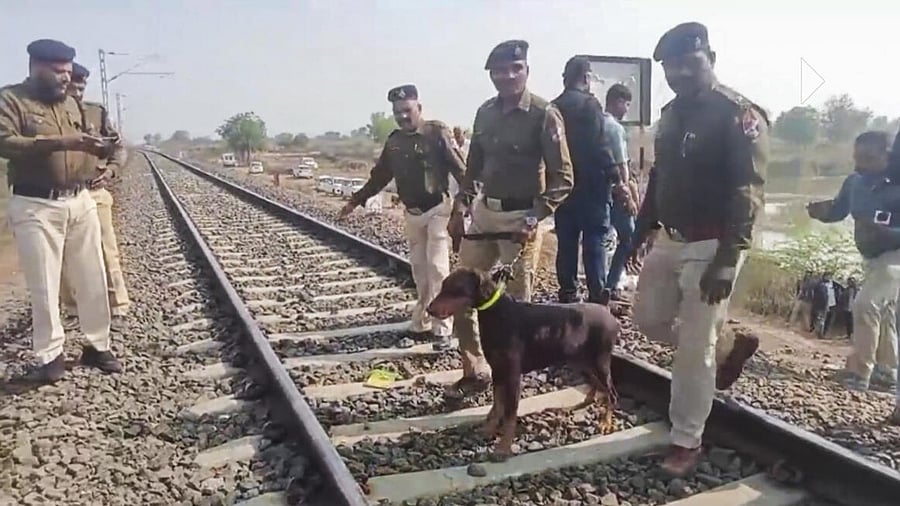
Police personnel during inspection of tracks a day after a train mishap, in Jalgaon district.
Credit: PTI Photo
Most accidents happen because of a misunderstanding or mistiming, a lack of ability and opportunity to respond to events, and sometimes, a combination of all these.
The tragedy on the tracks in Jalgaon district of Maharashtra on Wednesday – in which 13 people were mowed down by the Karnataka Express – had all these elements. The accident occurred when some passengers of the Mumbai-bound Pushpak Express jumped out of the train in panic after someone raised a fire alarm and pulled the chain to stop the train.
According to reports, a tea-seller started the rumour which was relayed by two passengers and spread among the others in the train. The passengers who jumped out were struck by a train on the neighbouring track which slowed down after the driver applied the brakes. A curvature on the track may have reduced the vision of the driver of the incoming train. Multiple factors combined to cause a major mishap, the first such event for the Railways in the new year.
It is not clear, yet, if the fire alarm was caused by baseless rumours or signs of sparks and smoke. Preliminary reports point to the possibility of sparks emanating from the hot axle or brake-binding (jamming) in the train. If true, they indicate an equipment failure and the Railways’ maintenance department needs to provide answers. The Railways have clarified that there was no spark or smoke but that cannot be the final word.
An investigation is underway to identify any operational or safety lapse that may have occurred. The state government has attributed the accident to “sheer rumour” or “misinformation.” The district administration has said that the police are also investigating possible criminal conspiracy angles while the Opposition attributed the mishap to a flawed safety system.
While the investigations may throw light on the cause, there are lessons to be learnt from this accident as well. Whether it is a human error, a mechanical failure, a natural disaster, unexpected or irrational passenger behaviour, misinformation or sabotage, the onus is on the Railways to ensure that accidents arising out of each of these threats are averted.
The Jalgaon accident raises the question on how the Railways would deal with a rumour that has potentially disastrous consequences spreading in a train. There may be the need for an internal communication system that could quickly and effectively deal with it. It is human nature to panic in a situation of perceived danger, and passengers cannot be blamed for their reaction. On the infrastructure side, the curvature of the line was a contributory factor. Every accident raises pertinent questions about safety and these are questions that cannot be left unanswered.
